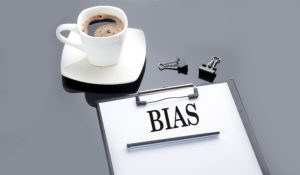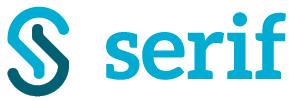All businesses want to hire the best available talent in the marketplace, but unconscious biases can get in the way of this. It is important for businesses to remove bias from their recruitment process to ensure the best individual gets the role.
We all have our own unconscious biases, it happens to every individual, but when it comes to recruiting the best people for your organisation, it can be a hindrance. To avoid this, companies are looking to focus on equality, diversity and inclusion to help boost the diversity of their workforce in a range of ways.

Unconscious biases are stereotypes and opinions which are unintentional but deeply ingrained within our beliefs and affect how we behave and respond to people.
Biased hiring results in less diverse teams, and a less diverse team hinders your business productivity, so there is a solid business case for removing biases in the recruitment process.
We examine the different types of biases that can be found and what steps can be introduced in an organisation to minimise the impact of these biases on the recruitment process.
Type of unconscious bias
There are many types of unconscious bias. Below are the ones most prevalent in the recruitment process:
- Affinity bias— this leads us to favour people to who we feel we have a connection or similarity. For example, attending the same university or college, growing up in the same area, or supporting the same sports team. This can have a big impact during recruitment, as you are more likely to favour someone that you have an affinity to.
- Halo effect – this occurs when we perceive one great thing about a person and let the halo glow of that one thing impact our opinions of everything else about that person.
For example, if we notice that someone went to a highly regarded university, or that they studied a certain subject. This can influence you to see the individual in a different way. - Horns effect – this is the opposite of the halo effect. This is when one factor can negatively influence the way that you see someone. For example, if we do not like the way someone dresses or if they have piercings or tattoos, this can cloud our judgement and perception of someone.
- Confirmation bias—this is when we look for evidence to back up what we already believe and have trouble believing evidence that goes against our beliefs. We could disproportionately reward an individual based on their name, places they have lived, or schools attended. The danger of confirmation bias in recruitment is that your judgement could be inaccurate and result in the loss of an alternative great candidate for the position.
- Name bias—rejecting an individual simply based on a person’s name without fully exploring their application. A British study* found that job applications with a British sounding name received a 24% positive response rate from employers. As for people with non-British sounding names, only 15% of them received a positive response despite having identical resumes and cover letters. Again, this can lead to a good candidate not being considered for a role.
A few other common ones in the workplace are gender bias, beauty bias, colour/culture bias, and attribution bias.
Ways to reduce unconscious bias in recruitment
Below are practical steps and tips that can be taken by business leaders and HR teams to reduce the negative impact of unconscious bias on the recruitment process to ensure the ideal candidate is selected:
- Introduce blind applications/CVs – CVs are often a crucial part of the recruitment process, however, there is certain information in CVs that can lead to unconscious bias. One way to address this issue is to encourage ‘blind applications’ that remove details like race, nationality, gender and age – all factors that can lead to biased decisions.
- Remove gendered wording – when it comes to creating a job description, it is important to understand the gender implications of words throughout the process. The words used can have a significant impact on the recruitment process. Research has found that women are much less likely to apply to job descriptions that include ‘masculine-coded’ words like ‘active’ and ‘ambitious’, while ‘feminine-coded’ words tend to appeal to both genders equally.
- Make interviews structured – during the recruiting process, many leaders and HR teams, may adopt a loose structure during the interview process to get an understanding of a candidate. However, following this process may lead to unconscious biases having an impact. By implementing a structured interview, it will ensure each candidate has an equal opportunity.
- Introduce an interview panel – when recruiting, it is a good approach to introduce an interview panel. By creating an interview panel that includes a diverse set of team members (in terms of gender, ethnicity and age) can ensure any individual unconscious biases are mitigated and help to recruit an applicant from a wider perspective and make a more informed team decision.
While unconscious bias is unavoidable in any individual, introducing the correct processes into the recruitment process can significantly reduce its impact on your recruitment process.
For additional support and information on how to mitigate unconscious bias in recruitment, seek an independent HR advisor for guidance.
* A 2017 study by Anthony Heath and Valentina Di Stasio


